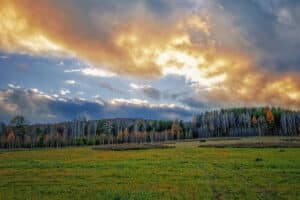Everybody that I see, that knows what I do, asks the same thing these days, “how are land and farms selling?” Consequently, I ask ALOT of agents with AlaLandCo and other companies the same question. The short answer is that land and farm properties ARE selling. Now I want to examine it a little further by posing a few more questions and giving you my prospective on the answers.
1. Are market prices for land as high as in the lead up to the residential real estate downturn and how do these prices relate to listing prices?
2. What are buyers looking for in today’s market?
3. What can sellers do to increase their chances of putting their property on the SOLD list?
4. What general trends exist in the market today?
Are market prices for land as high as in the lead up to the residential real estate downturn and how do these prices relate to listing prices?
Market prices that land has actually sold for have declined somewhat. Sellers that NEED to sell are in the market these days…which is a stark contrast to the market of a few years ago. During the “boom” most of the land market was made up of transactions where the buyer with immediate needs had to buy from a seller that really did not care if he sold or not. Simply put, the seller was willing to sell only if the buyer was willing to pay what everyone considered a “retail” price. In today’s land market, buyers have many choices. The market does not move as fast. Sellers need to sell. This creates downward pressure on sales prices. I use market and sales price interchangeably. However, listing prices differ dramatically from these. Which gets to the second part of the question. Listing prices both then and now are drastically different from sales prices. A few years ago, land was taking 6 months to one year, on average, to sell once a seller decided to part with a property. My best estimate of today’s market is 9 to 16 months. Now, relating this to price…During the “better” market of a few years ago, sellers would list a property at what he thought was a high price, because he did not want to leave money on the table. During the next 6 to 12 months, market prices would tend to catch up with the listing price. I saw that trend occur time and again. Today, I see sellers begin trying to sell a property much the same way…by pricing a property at what they believe to be high retail. The problem with this is that the market is edging down, not up as it was before. It takes most sellers about 3 to 6 months to come to the realization that the land is not going to bring those high retail prices, and to begin looking at moving the price down to a more reasonable goal. Today’s buyers are not even willing to consider something that they don’t think is a good buy. Market prices have gone down in the neighborhood of 10-15% while listing prices have went down around 20-25%.
What are buyers looking for in today’s market?
Buyers are looking for a deal. Buyers are willing to turn over more rocks, and pass up opportunities if they don’t perceive it as a great opportunity. Buyers are looking for sellers that are willing to work with them in the process of purchasing property. Buyers are looking for properties where the seller and the seller’s agent have taken all of the guesswork out of the decision making process. Buyer’s are looking for properties that meet their needs, are priced reasonably, are surveyed, and are good investments. Any type of property will still sell in today’s market if it meets the buyer’s demands.
What can sellers do to increase their chances of putting their property on the SOLD list?
Sellers can meet the buyer’s demands. Today’s market is a buyer’s market. The buyer is in control of most transactions. The seller should go ahead and take care of the things that the buyer is demanding. When the seller does that, the property will sell. Buyers do not care how long a property has been on the market if it fits what they are looking for and they are provided with enough information to make a buying decision. In today’s market the seller should: 1. Ask a reasonable listing price – unreasonable pricing gets few, if any lookers. 2. Have the property surveyed if there is not a current survey. 3. Take care of any issues that affect ownership or use of the property. If the driveway to the property crosses another landowner, and you have a simple gentleman’s agreement with that landowner, you should get that agreement in writing at the least. Most buyers would rather have a deeded easement to use the land for access. Think about it from the buyer’s perspective. The buyer does not know the landowner the way that you do. What if he decides that he will no longer allow access through his property? 4. If there are any issues that you cannot clear up, be up front and honest about the issue AND price the property accordingly. 5. Sellers should be proactive, and educated about the market. The buyer is. 6. Make the property accessible. Buyers will not buy something that they cannot see. You might know the creek at the back of the property is beautiful, but if the buyer cannot get there, it might as well not exist. Opening up timberland properties with 4×4 roads, view spots, and wildlife plots is a great place to start. 7. CLEAN UP!…Rural properties tend to have junk piles. Clean them up. Buyers do not want your junk. They have their own. Junkiness around and on a property is a huge turn-off for buyers. I see many sellers loose interest in the properties they are trying to sell and let things like mowing and simple upkeep go. This is the time when you should keep it looking it’s best. 8. If your property is not getting any lookers, it is priced too high!
What general trends exist in the land market today?
Buyers are looking for properties that they can use for recreation, and justify with investment numbers. Timberland investments seem to fit the category well. There are a number of possible streams of income from timberland. The obvious is the growth and harvest of timber. Of growing popularity is the possibility of selling carbon credits that one would own by investing in timberland. “Going Green” is finally reaching our capitalistic system. Companies that are major carbon emitters will soon be buying these credits so that they can continue to operate. Forest lands are great at sequestering carbon (binding up from the atmosphere), which is what the carbon credits are actually for. Timberland properties can also bring income from hunting lease rents and from appreciation in land value. For all of these reasons and more, timber properties that are for sale have gotten much more attention than in the past. Farm land and farms for sale have gotten more attention of late as well. Again, that has a correlation with the potential of multiple streams of income from owning a property. Many of the Baby Boomers are still looking to get back to the farm. Some are looking to invest in something more stable than the volatile stock market. Farm land provides the potential for traditional farm income from the production of commodities. Many are looking for farms to support their lifestyle by growing more wholesome foods. They are more comfortable with the growing conditions and methods used to grow these foods on their own “natural” or “green” farm. For this reason, I have seen an uptick in the interest in rowcrop land. Development land has gotten considerably slower. Some would argue that the market does not even exist today, and I guess that in some localized areas it probably does not. However we do still have local markets that are strong. The areas right around large universities and areas around communities with a large government influence are prime in today’s market. Plus, we still have some enterprising Americans that are willing to take the long-view of the market and know that buys made in today’s market will pay dividends when the market comes back up…and it will.
There are still many opportunities in today’s land market for the savy investor to make money. Timberland seems to be one of the safest investments that one could make in terms of holding on to purchasing power. I will explore the difference in nominal, dollar values, and purchasing power in another post. This is a key element in why investors should be looking to land as an investment.
This content may not be used or reproduced in any manner whatsoever, in part or in whole, without written permission of LANDTHINK. Use of this content without permission is a violation of federal copyright law. The articles, posts, comments, opinions and information provided by LANDTHINK are for informational and research purposes only and DOES NOT substitute or coincide with the advice of an attorney, accountant, real estate broker or any other licensed real estate professional. LANDTHINK strongly advises visitors and readers to seek their own professional guidance and advice related to buying, investing in or selling real estate.









Robert your article is well-timed and offers accurate insights into what is happening with the rural property market. I am seeing buyers who are searching for land in Alabama are more than willing to look at and purchase quality properties that are well-priced. Gone are the days of escalation clauses and exorbitant asking-prices. Sellers and buyers must find common ground based on the items you mentioned such as price, easements, surveys, and full disclosure of issues with the property. Thanks for this helpful article.
Very good article. Good thing to use when listing property to try to help get sellers into reality.
Robert: That was a great article and the timing was ideal.
I sent a similar letter to all our clients and investment partners a couple of weeks ago. Although the response was positive, I sense many of them aren’t quite to the point of acknowledging the fact that the seller party is over. However, we did see a few listing price reductions and offers to finance.
Thanks for all the comments. The more we can educate sellers about the reality of the market, the better off we are. There ARE opportunities out there for those willing to look for them.
Great artice. Thank you!
Couldn’t have said it better myself. Good advice.
Land around here is kind of flat right now, no pun intended. Sometimes, it is as simple as just shredding the property or at least cutting senderos so the buyers can get on the property to see it.
The midwest farm land sales are hot right now. Prices are two to four times 2001 prices. I get calls from buyers and buyer brokers wanting to buy a particular farm that they have researched and found me as owner. I have sold in this market and doubled up in four and a half years (5 crops). A lot of family trusts and estates are selling at auction in this hot market. I have two farms going to auction on Sept 7, 2012.